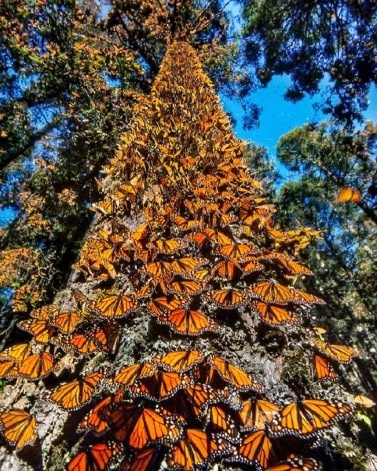

Monarch Migration
By Karin Bolchazy
Monarch butterflies come back from overwintering in the high forests of Mexico to Pennsylvania in mid to late June to immediately lay eggs to produce the next generation. Making sure your yard is plentiful with native flowering plants (milkweed among them) from June to September is one of the best things you can do.
In the entire world, no butterflies migrate like the Monarchs of North America. They travel much farther than all other tropical butterflies, up to 3000 miles while weighing about 1 gram! Eastern North American monarchs fly south using several flyways then merge into a single flyway over Central Texas. It is truly amazing that these monarchs know the way to the overwintering sites even though this migrating generation has never before been to Mexico! They fly to the same winter roosts, often to the exact same trees previous migrating generations used. Individuals only make the round-trip once. It is their children's grandchildren that return south the following fall. Generation 1 monarchs are the offspring of the monarchs who overwintered in Mexico. Each successive generation travels farther north, and it will take 3-4 generations to complete the trip to the northern United States and Canada.
During the summer breeding season, monarchs live from 2-5 weeks during which they mate and lay the eggs that become the next generation. The last generation is the one that starts the cycle of migration to Mexico again in the fall. Even though these butterflies look like summer adults, they won't mate or lay eggs until the following spring. Instead, their small bodies prepare for a strenuous flight by storing fat in the abdomen. This fat not only fuels their flight of 3000 miles to Mexico, but must last until the next spring when they begin the flight back north. Some researchers think that Monarchs conserve their "fuel" in flight by gliding on air currents as they travel This is an area of great interest for researchers; there are many unanswered questions about how these small organisms are able to travel so far.
Another unsolved mystery is how Monarchs find the overwintering sites each year. Somehow they know their way, No one knows exactly how their homing system works; it is another of the many unanswered questions in the butterfly world.
Sources: birdwatchinghq.com; monarchwatch.org; US Forest Service